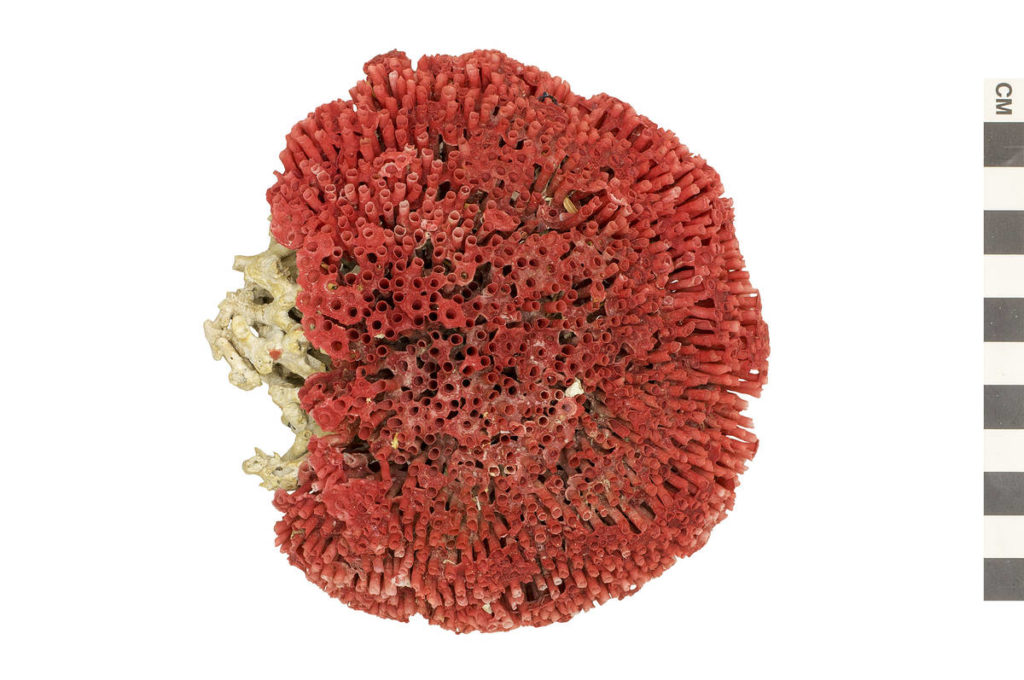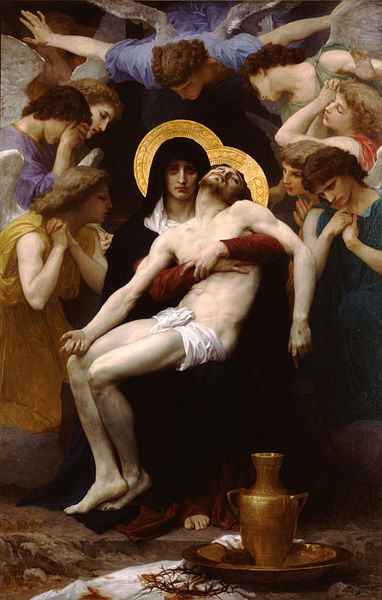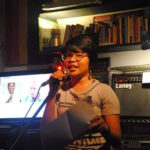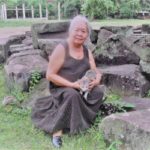El Conocida del otro (Recognizing the strange): Dismantling self and other in “The Last of the Sama-sellang”
I knelt beside him and found myself unable to resist the urge to lay my hand on the sama-sellang’s heaving chest. It did not recoil at my touch. I was struck by the warmth of its body. This was neither plastic caricature nor just the object of many songs and legends. This was a living creature, the last of its kind, its hot mass continued to pulse under my palm, struggling to persist despite the cruelty that it had endured.
“I am so sorry,” I whispered.
“There was nothing you could do,” Mr. Tsai said as he continued to caress the creature.
—Excerpt from “The Last of the Sama-sellang” by Sigrid Marianne Gayangos, published in Cha: An Asian Literary Journal, Fiction, July 2018 (Issue 40: Writing the Philippines) www.asiancha.com/content/view/3237/673/
“The Last of the Sama-sellang” is a short story by Sigrid Marianne Gayangos recounting the last few events leading to the death of a creature, the last of its kind, a demise that is also woefully extinction, the extermination of a species. But the story is also an account of a first encounter between human (the narrator) and animal (sama-sellang), an encounter made possible by extraction of the creature from its habitat (the deep seas of the Zamboanga Peninsula) and journey to “no man’s land,” both meeting at the liminal house on bamboo stilts of a certain Mr. Tsai. In the story, this taking of the creature is not so much an act of confiscation from its home as that of rescue from those who have already caused so much pain resulting in its slaughter. And the narrator’s journey into no man’s land is not so much encroachment as it is atonement for the suffering and the slaughter caused by humans.
The narrator, speaking as the first person singular “I,” describes the sama-sellang at first sight as “a creature that looked like a human-whale chimera gone wrong.” The sama-sellang as the Other marked by its difference (human but whale, whale but human) and abjection (gone wrong, distorted, depleted)—the former by virtue of its resistance to classification, the latter because of exploitation, as colonizer plunders colonized.
The setting, a house past the two familiar, visible islands of Sta. Cruz, is reached via a two-hour banca ride from the mainland and across the Basilan Strait. The length of time it took to reach this house suggests a journey from the island province of Basilan, which can be found South of Zamboanga City. Sta. Cruz, which is about 20 minutes away from mainland Zamboanga, is one of the more popular tourism destinations in the region and whose pinkish sand is advertised as a must- see peculiarity.

Retrieved from collections.nmnh.si.edu/media/?i=10489877&h=12000
This “peculiarity” is caused by the erosion of red-looking organ pipe corals which eventually wash ashore mixing with the white sand, symptomatic of the area’s history with illegal coral reef mining. Tubipora musica or the organ pipe coral is included in the International Union for Conservation of Nature and Natural Resources (IUCN) Red List of Threatened Species classified as Near Threatened (NT) since 2008 [1]. Fishing communities of the earlier years also resorted to dynamite fishing until the area was converted into a Protected Zone under the management of the City Government of Zamboanga and the Protected Area Management Office.
Visitors who wanted to see Sta. Cruz are given an orientation before they set foot in motorized vintas that will bring them across the sea to the island. The orientation stresses the prohibition against bringing back sand to the mainland whether or not it be accidental. The guides remind everyone to check even their pockets for sand and to drain these out in the island before returning.
The orientation also announces the Sta. Cruz islands’ status as protected area, declared under Presidential Proclamation No. 271 in 2000 under the category of Protected Landscape and Seascape and its peripheral waters as buffer zone. This proclamation, more importantly, upholds the rights of indigenous communities of the islands to custody, protection, and habitation of the area.
The writer of the short story, who was born and raised in Zamboanga City, carves a path for the narrator past the mangroves in Sta. Cruz and through what she writes as a “seemingly impregnable tangle of interlocking branches [that] discouraged even the most daring wanderer.” The urgency to arrive to this reticent area of the island is made known when the journey’s turmoil is finally replaced by a halcyon sunset, with the first trace of a wound amidst—or, more appropriately, of—the sea: the smell of rot.
With the horizon so close and yet still perpetually receding in the house beset by serene salt water, the smell of decay can only mean a festering wound from a body. Scent is the first intimation of death. This potent detail in the story only prefigures what the title itself divulges, the last of the Sama-sellang. One death that is not exorcised of its consequences. Or another one consequence of a previous hundred deaths.
Mr. Tsai’s house, that which concurrently separates and connects the realms of human and animal in the story, becomes a cursory death bed for the sama-sellang. And even for those who are accustomed to the sea, who discern her temper through her marejada (volatile tides), who revere her generous provision of fish and fruit, she becomes pernicious waters. Even for her children, endemic creatures she bears in her womb and nourishes, like the sama-sellang, such that leaving these creatures in her waters would be leaving them to peril. How does home turn into hazard?
In a place far North of Canada called the Baffin Islands, an indigenous community called the Inuit have a word in their Inuktitut language to describe a sense that something has grown to behave differently and unexpectedly. Something that had always been familiar, a place—your home—for example, suddenly grew different—strange—even while you have just been residing in it all this time. This word is Uggianaqtuq, ‘like a familiar friend behaving strangely’, which the Inuit people have used to describe changes in the weather in recent years [2].
“This … this is the sama-sellang?” the narrator asks Mr. Tsai, the man who has taken it upon himself to care for the creature in his house, having been afflicted by a malaise and dejection that can only come to those who recognize this loss.
Scientists have long been trying to explain to us how extinctions are a major driver in the loss of biodiversity. This reduction of biodiversity exacerbates our changing climate. A study conducted by biologist David U. Hooper and his colleagues establishes that reduced biodiversity is as dangerous as global warming and reduces “nature’s ability to provide goods and services such as food, clean water and a stable climate.”3 The high rates of extinctions we are experiencing, the study cites, are caused by habitat loss, overharvesting and other human caused-environmental changes.
In the story, the writer builds a case for the symbiotic relationship present not only between sama-sellang and ocean (its home), but also between sama-sellang and human. Thus, also the interdependency of human and ocean.
She describes the creature by making an allusion to the Greek Chimera. In this instance the chimera is not one that is goat, snake and lion, but one that is human and whale—a creature which is of sea and land.
Inside the pool was a creature that looked like a human-whale chimera
gone wrong: its eyes sunken into dark holes; a tear on its face, which could
only be the mouth, revealed many sharp, fang-like teeth; its skin (or was it
scale?) was blue-gray all over, all six feet of it, with patches of pink and green.
Next to the pool, Mr. Tsai knelt and caressed the head of the wheezing creature.
The Chimera in Greek mythology was killed by Bellerophon, a man wrongfully banished and blamed for crimes he did not commit. In a bout to prove himself and win the favor of the gods, he killed the Chimera, a female fire-breathing creature by throwing a spear with a block of lead into her mouth. The Chimera’s fire breath melted the block of lead Bellerophon dropped into her mouth, blocking her air passage and suffocating her until she died.
However, the writer further qualifies this comparison to the chimera with the words “gone wrong”—indicating a creature unrestored, unhealed, ailing, impaired, traumatized. Through this, the writer demystifies what she also writes as mystical, if not miraculous: “It (the sama-sellang and presumably also this encounter with it),” the narrator thinks as s/he crouches, “was the stuff of folktales—the ancient sea dwellers who tamed waves and sunk ships, who whispered to and ordered winds according to their whims, who were as old as the southern islands and seas themselves.”
The mythology surrounding the creature and its sacredness does not apparently hold against what it could be worth in the underground market. The sama-sellang is bludgeoned into being commodity. Their famed gem-like scales whose exquisiteness must be so otherworldly makes so viable a commodity it has sustained an underground trade until the death of the last of the species. An illegal trade built on exploitation, one cannot help but ponder about the degree of complicity (to a reader, even Mr. Tsai must be suspect as are the people of the mainland) required to make it possible. Who benefits from this and what is the price we have all traded for aid in the smooth operation of these creatures’ capture and in the traffic of their scales?
The sama-sellang in this story, despite its imminent demise and its “dull, sickly mound,” was still able to sell for a hundred-thousand to a Malaysian trader. Nothing specific was stated in the story, so one could imagine no other use for those scales but ornamentation, given their shimmer and gem-like quality. A life in exchange for embellishments in one’s home. This perversity results not just in multiple wounds on the poor sama-sellang but in its body’s inability to induce healing, making it a dead creature before it even dies.
“The Last of the Sama-sellang” draws attention to these veiled exploits amidst, despite, and linked to a looming ecological disaster. The short story, while it considers a sole death, contemplates the last one of an entire species signaling the slaughters preceding the one we read about. The death of the sama-sellang is the last one because there is no more sama-sellang to kill and not because the slaughterers have somehow reformed or ceased killing these creatures for gain.
The narrator’s question “Will it live?”, a typical response in the face of an ailing life, not only misdirects our agony towards palliative measures but conceals the more imperative questions to confront: “Will we let them live?” or “Are we going to stop?” thus pointing to the real problem—humanity’s excesses rooted in its delusional agency over all of creation. The anthropocentric order of things.
But a realization eventually befalls the narrator as s/he moves closer and is able to touch the sama-sellang: the creature mystified and objectified into commodity, is a warm, living, breathing, sentient, vulnerable mortal.
I knelt beside him and found myself unable to resist the urge to lay my hand
on the sama-sellang’s heaving chest. It did not recoil at my touch. I was
struck by the warmth of its body. This was neither plastic caricature nor just
the object of many songs and legends. This was a living creature, the last of
its kind, its hot mass continued to pulse under my palm, struggling to persist
despite the cruelty that it had endured.
Our indigenous tribes and communities have known for so long: we are of the world. The world is not of us. Today, it is the country’s indigenous peoples who are at the forefront in the fight for the protection and cultivation of our environment. They must be given the space and support to speak, act, and teach us before it is too late. And we always think it is not yet too late.

Mr. Tsai is one character who, having lived with the sea and acted as caretaker of its creatures, including the sama-sellang, resembles and represents our indigenous communities. “It belongs to the ocean. We are not worthy of their purity,” hesays. In the creature’s last moments, Mr. Tsai knelt, caressed, and never left its side. The old man wore a garb similar to the way the Samal tribes of the Sulu Archipelago dressed.
One of the first moments we see Mr. Tsai with the creature is in a tableau so resembling a mother caressing her child to sleep and reminiscent of Michaelangelo’s (c. 1498-1500) or William-Adolphe Bouguereau’s “Pietà” (1876), which both depict religious imagery, Mary holding, almost carrying, Jesus’ body after crucifixion. William-Adolphe Bouguereau’s “Pietà” (1876), however, differs from Michaelangelo’s work because it shows a non-acquiescent expression on Mary in the face of her son’s death. This painting has been described as a scream in—or, more aptly, to—the face of loss.
Mr. Tsai demonstrates the same devastation in silent protest, being afflicted by a loss as if—or, because—the creature is his own. The sama-sellang pushes closer to the man and as he clasped the dying creature’s hands, it drew fitful breaths. What he does next is another one of the story’s ingenious use of imagery—in the final moment, Mr. Tsai leans his forehead against that of the sama-sellang. In this gesture, the two seemingly merge into one: “one forehead to another, hands and fins, sallow skin and intricate patterns on the old man’s sash,” the writer paints. And as the sama-sellang took its final breath, Mr. Tsai held it in his embrace.
The sama-sellang let out a final sound, a growl that was at once pitiful
and terrifying. It reverberated around the tiny house, and as the echo died
away, so did the beating under my hand. And then, darkness descended
unannounced.
Mr. Tsai continued to hold the creature in his embrace. I rose as
quietly as I could and headed to the makeshift stairs that faced the quiet sea.
The Sama-sellang’s name coupled with the story’s setting makes direct reference to the Samal (also Sama) peoples of the Sulu Archipelago, whose communities have settled in Tawi-Tawi, an island located further South West of mainland Zamboanga. Many are still nomadic and can be found in many other parts of Mindanao. A community of Sama Banguingui also continue to live in and care for the islands of Sta. Cruz.
Like other indigenous tribes of the Zamboanga Peninsula, the Samal have been historically dispersed and pushed to the peripheries because of colonial forces and power struggles with other tribes in Mindanao.
Today, a handful of street mendicants are identified as Samal-Badjaos or simply called Badjao. Despite their pervasiveness, the Badjaos are relegated to the peripheries of a dominant culture that has delineated what it means to be civilized and savage. The Badjao, also called sea gypsies, are of sea and land like the sama-sellang. “They are among the most obscure, misunderstood and marginalized among Filipino ethnic-linguistic groups,” writes Bobby Lagsa in an report entitled “Plight of the Badjao: Forgotten, nameless, faceless [4].”
The same report iterates what Lorenzo Reyes, then Chancellor of the Mindanao State University-Tawi-Tawi College of Technology and Oceanography (MSU-TCTO), calls for: a redress through social justice that includes social, educational and economic development for the Badjao people.
Because of difference (abjection assigned by historical and social agents), the Badjaos straddle the line between visibility and invisibility. And being relegated to the peripheries means not belonging to the “central” culture.
When appended with the suffix –ing, the word “other” becomes “othering,” which directly contradicts “belonging”—a more familiar term, albeit much more fraught in more ways than othering. An article from the Othering and Belonging multimedia journal of the Haas Institute for a Fair and Inclusive Society, defines “othering” as “a set of dynamics, processes, and structures that engender marginality and persistent inequality across any of the full range of human differences based on group identities [5].”
These parallel threads connecting sama-sellang and real-life Samal also drive attention to the links between colonialism and capitalism, both drivers of ecological change and disaster, the former being a vehicle of the latter and vice versa. The Badjao is made less human, the sama-sellang is made more animal favoring the othering that distorts the colonized into what the colonizer sees fit to serve the established order to maintain power. Rolando Tolentino writes, “Of what use, then, is a colonizer, if the colony has been taken out of its aegis, out of savagery—where the savage has become civilized… For the colonizer, elements of the colonized’s savagery remain crucial to his colonial enterprise, that which defines the logos of colonialism… [6]”
It is in the interest of the I that the Other is kept inferior and subservient. It is for the benefit of capitalist and colonialist powers to portray the indigenous wardens of the sea, the Samal, as abject. It is easier to assume no responsibility in their slaughter when one knows very little about the sama-sellang.
Egyptian-French social scientist and activist Samir Amin, in an interview for French daily L’Humanité (Humanity in English), explains that capitalism is inseparable from colonialism [7]. He says that colonialism was not caused by just some conspiracy. To him, the goals of colonialism align with the goals of capitalism. When asked to explain how the system of colonial exploitation worked, Amin stresses how capitalism, for example, has for so long plundered the resources of the peripheries, which is part of, if not central, to the overall colonial project:
It has been based on unequal exchange, that is, the exchange of
manufactured products, sold very expensively in the colonies by commercial
monopolies supported by the State, for the purchase of products or primary
products at very low prices, since they were based on labour that was
almost without cost―provided by the peasants and workers located at the
periphery. During all the stages of capitalism, the plunder of the resources
of the peripheries, the oppression of colonized peoples, their direct or
indirect exploitation by capital, remain the common characteristics of the
phenomenon of colonialism.
The capture of the sama-sellang for its scales to be scraped and sold at high prices in the underground market illustrates this unequal exchange that Amin points out. Never mind, for example, the communities who are dependent on the sea and her gifts, who will be affected by her poisoning and devastation, or the death of her species, so long as one profits handsomely and gains more capital.
Because the story operates in the intersection of the postcolonial and the ecocritical, this othering of the sama-sellang assigns a value subsuming the life of the creature to the whims of men. To the current state of affairs, all these “little” exploits causing the loss of biodiversity and exacerbating the climate crisis come at a low cost if these can yield continuous profit that secures power and capital for corporations and the governments they hold at leash. The deaths resulting from the pillage of those whose lives and welfare are not central concerns (those relegated to the peripheries) come second only to the accumulation of power and profit. The extinction of the sama-sellang is a mere complication.
So, in a bout to prove humanity’s supremacy over God’s creation, the human-whale chimeras are killed as if humans are central to story of the universe and its ecosystems. This is done not to win the favor of gods, but to show power and dominion over other living beings.
While human greed is scrutinized, the story branches further into a call to recognize one other symbiotic relationship—that between human and ocean. The interdependence of the I and the Other, and the demise of the I without the Other.
“In literature,” writes Jonathan Hart in a chapter entitled “The Literary and the Other” of his book The Poetics of Otherness: War, Trauma, and Literature, “the relation between the reader and the writer is like that of self and other… Each is other to himself or herself or, in other terms, each person is both self and other. [8]”
The story plays with this dynamic precisely demonstrating what Hart means as an identity simultaneously holding both I and Other. And it is in holding both I and Other that this dichotomy shatters. And in this shattering comes the decentralization of man in the greater scheme of things.
While the sama-sellang is marked as animal/creature, having been mystified as is usual for the colonial object which is made obscure, it is also at the center of the story, hence playing both subject and object. This centering, although insufficient to make a case for the sama-sellang’s subversion of his position in the colonial order and can easily slip into colonial fixation, gives room to interrogate the supremacy of human (or the prototypical “I” in the anthropocentric order of things) over animal.
More importantly, this also calls into question the very need for a hierarchical order—this particular one—an obsession that is very characteristically anthropocentric, and consequently calls for a recalibration or a change in direction towards biocentrism or the “ethical perspective holding that all life deserves equal moral consideration or has equal moral standing [9].”
The story plays with this delineation, and while the sama-sellang being animal/creature is subsumed to the whims of men, it is also one man grieves for because he grieves also for himself. The grief is possible only because the I identifies itself with the Other and in Hart’s conjecture, is both I and the Other. The story makes it clear that Mr. Tsai in his traditional garb is mirror image to the sama-sellang as he leans his forehead onto the animal’s, a union and dismantling of I and Other.
The story calls into question not the positioning of which groups of people or living organisms are at center and at periphery, but the very notion of this arrangement, the need to maintain a center itself. The need to maintain abjection caused by systemic neglect, discrimination through development that is non-inclusive in the greater scheme of things.
And even as the dominant order assigns inferiority to the Samal, they are those who stand to educate us, like other indigenous communities, about how to reverse the effects of climate change to prevent the ecological disaster that we are causing. Leslie Bauzon, chairperson of Division VIII of the National Research Council of the Philippines (NCRP-DOST), says that the Badjao’s “navigational and boat buildings skills are an indication of their knowledge and creativity [10].” This means the problem is not the configuration of communities or the differences that abound among peoples, but the meaning system used to explain these configuration and differences.

Two boys still play by the shore of contaminated waters.
“To know there is a wound and a scar, someone has to recognize it in a world full of misrecognition,” Hart writes [11]. This recognition of invisibility and obscurity is a crucial first step. The next step is to interrogate reality as it is seen from where we stand. This would mean pointing out the incongruences.
Locally, it is seeing the ludicrous and ironic placement of a sign warning locals not to bathe in the shore and waters off the R.T. Lim boulevard, a site from where the protected landscape and sea scape of Sta. Cruz can easily be seen. The shores of this part of the mainland have been contaminated because of hospital waste thrown into the sea water. The beach which smells of rot and salt because of this contamination is still a famous spot for swimming among those who disregard the sign they put up. Everyday, the wind carries the smell of the water to the many motorists and passengers who make their way to the schools and offices across the road by the boulevard. The sign by the beach says:
CAUTION
WARNING: UNSAFE FOR SWIMMING
WATER TEMPORARILY POLLUTED BECAUSE OF
HIGH BACTERIA LEVELS WHICH MAY POSE
A RISK TO YOUR HEALTH.
This is the same sea that surrounds Sta. Cruz.
Notes
1 [1] Obura, D., Fenner, D., Hoeksema, B., Devantier, L. and Sheppard, C. Tubipora musica. The IUCN Red List of Threatened Species 2008: e.T133065A3589084. dx.doi.org/10.2305/IUCN.UK. 2008.RLTS.T133065A3589084.en.
2 [2] From UNESCO.org’s “The Inuit, First Witnesses of Climate Changes”, Peter Coles writes about Shari Fox and GearHeard’s work in helping document the Inuit people’s experiences of the changing climate. He cites, for instance, how certain members of the community died from a snow storm that happened unexpectedly. Having been long adapted to their home environment and its climate, the community suddenly faces the predicament of being unable to read it.
3 [3] David U. Hooper, E. Carol Adair, Bradley J. Cardinale, Jarrett E. K. Byrnes, Bruce A. Hungate, Kristin L. Matulich, Andrew Gonzalez, J. Emmett Duffy, Lars Gamfeldt, and Mary I. O’Connor, “A global synthesis reveals biodiversity loss as a major driver of ecosystem change,” Nature, 2012; DOI: 10.1038/nature11118.
4 [4] Bobby Lagsa, “Plight of the Badjao: Forgotten, nameless, faceless,” www.rappler.com/nation/114975-badjao-nameless-forgotten-faceless.
5 [5] john a. powell and Stephen Menendian, “The Problem of Othering: Towards Inclusiveness and Belonging,” www.otheringandbelonging.org/the-problem-of-othering/.
6 [6] Rolando Tolentino, “Abjection: Dogeating/Dogeaters,” Keywords: Essays on Philippine Media, Cultures, and Neocolonialisms (Quezon City: Ateneo de Manila University Press, 2016), pp. 59 – 79.
7 [7] Lucien Degoy, “Samir Amin: Colonialism is Inseparable from Capitalism,” original French article translated by Patrick Bolland, 28 January 2006, www.humaniteinenglish.com/spip.php?article70.
8 [8] Jonathan Hart, The Literary and the Other, The Poetics of Otherness: War, Trauma, and Literature, p. 27.
9 [9] Joseph R. DesJardins, “Biocentrism in Ethics,” in Encyclopedia Britannica, www.britannica.com/topic/biocentrism.
10 [10] Bobby Lagsa, “Plight of the Badjao: Forgotten, nameless, faceless,” www.rappler.com/nation/114975-badjao-nameless-forgotten-faceless.
11 [11] Jonathan Hart, The Literary and the Other, The Poetics of Otherness: War, Trauma, and Literature, p. 27.

Floraime Oliveros Pantaleta writes poetry and nonfiction. She also translates from Chavacano and English. Currently, she teaches Creative Writing, Literature and Language courses at the College of Liberal Arts, Western Mindanao State University in Zamboanga City. She holds a degree in Literature and Linguistics from the Mindanao State University – Iligan Institute of Technology (MSU-IIT). She hails from Isabela City, Basilan.

 BACK TO ISSUE
BACK TO ISSUE









